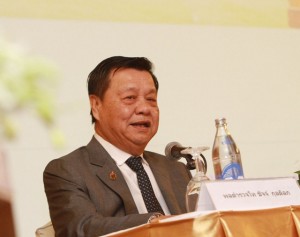Widgetized Section
Go to Admin » Appearance » Widgets » and move Gabfire Widget: Social into that MastheadOverlay zone
Major restructuring. Three separate business units ,the rail transport
During the past decade, a call has been constantly made for a better use of the rail transport to strengthen Thailand’s economic and social development. Specifically, logistics and transportation costs in Thailand have increased relative to the country’s Gross Domestic Products. However, the rail transport contributes to only 2.5% of the country’s freight (e.g., container and bulks) transports. Given the increasing trend in thefuel price and the upcoming AEC 2015, the railway transports will become even more important. In addition, Thailand has committed in improving its railway infrastructure for the Singapore- Kunming (China) Rail Link. This rail link is expected to help stimulate cross-border trades and goods shipments to Europe and Australia from China as well as between China and Southeast Asia.
Due to the lack of investment in infrastructure upgrades and locomotive acquisitions over the past three decades, the 176.81 Billions Baht investment framework Baht (or $5.8 Billions with the exchange rate of 30.5 Baht for $1 U.S) was earlier proposed and approved. This framework calls for Sate Railway of Thailand or SRT during the next five years to invest in key infrastructure areas such as new constructions of double tracks over 873 km, acquisitions of more than 70 locomotive units and other necessary rolling stocks, and installation of signaling systems. This investment scheme aims to increase the proportion of rail transports for freight services (cargoes and containers), to improve operational performance such as on-time and speed, and to strengthen the public safety, especially at the railroad crossings.
To ensure the realization of the impacts expected from the above scheme, the structural change within the SRT has also taken place concurrently while the investments are continuously made. As a result, the SRT has established three business units (BU) which oversees operation, maintenance, and asset management. These three BUs are expected to provide public services and utilize the SRT’s existing assets. The scope of BUs does not include infrastructure investments and upkeeps as well as other organizational support such as IT and human resources belong to the SRT. This change is expected to streamline the chain of command so that the SRT becomes more flexible and responsive to future public demands from passengers and business operators alike. This structural change should also help clarify one of the most critical challenges to the SRT today and in the future; i.e., its debts. The SRT debts primarily stems from the burdens of past infrastructure investments and accumulative operational losses.
The impacts from the 176.81 Billions Baht framework and the structural change should be clearly felt with 3-5 years as the SRT will have completed all planned investments to improve the track and the availability of locomotives, and will have its organizational capability from the BUs to execute these plans. After this completion, it is expected that the SRT will be able to
- increase the cargo and container transport from 11 million tons in 2010 to 37 million tons in 2020,
- increase the number of passengers from 48 millions in 2010 to 71 millions in 2020,
- increase the average speed from 50-60 km per hour at the present to 90-100km per hour in 2010, and
- reduce the energy consumption as more companies and passengers decide to choose the SRT as the transport mode by as much as 20-30 billions Baht.


You must be logged in to post a comment Login